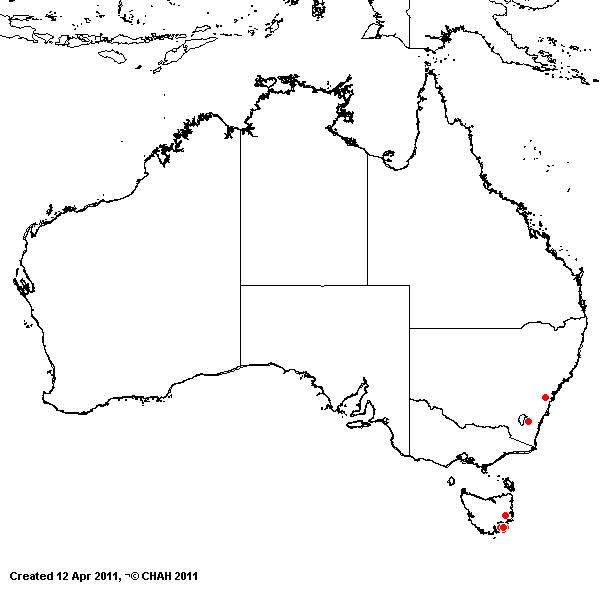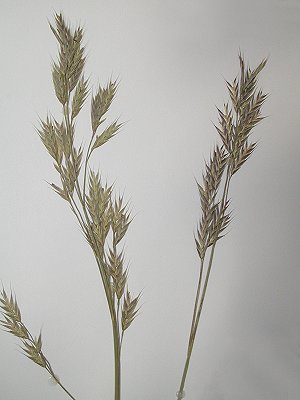Bromus cebadilla* Steud. Syn. Pl.
Glum. 1:321 (1854).
Classification. (GPWG 2001) : Subfamily Pooideae.
Tribe Bromeae.
Type of Basionym or
Protologue Information: ST: C.G. Bertero 117, 1828, Chile: Juan
Fernandez Islands: Rancagua (P; IT: US-865524 (fragm. ex P)). Also type of Bromus
stamineus E. Desv..
ST: Bertero 118,
ST: Bertero 861,
ST: Bertero 1411,.
Key references
(books and floras): [2002] D.Sharp & B.K.Simon, AusGrass, Grasses of
Australia, [2008] S.W.L.Jacobs, R.D.B.Walley & D.J.B.Wheeler, Grasses
of New South Wales, [2009] A.Wilson (ed.). Flora of Australia, Vol
44A. Poaceae 2 (90).
Habit.
Perennial. Culms 130 cm tall. Leaf-blades 15–43 cm long, 3–7 mm wide.
Inflorescence.
Inflorescence compound, a panicle. Panicle loose, 11.5–30 cm long.
Spikelets.
Spikelets pedicelled. Fertile spikelets many flowered, with at least 2 fertile
florets (6–10), comprising 6–10 fertile floret(s), elliptic, (1.5–)20–30 mm
long.
Glumes. Lower
glume lanceolate, keeled, 5–7 -nerved. Upper glume lanceolate, 9.7–13.9 mm
long, keeled, 7–9 -nerved.
Florets.
Fertile lemma 11–14 mm long, keeled, 7–9 -nerved. Lemma apex awned. Median
(principal) awn subapical, (2–)3–10 mm long overall.
Continental
Distribution: Australasia.
Australian
Distribution: New South Wales, Victoria, Tasmania.
New South Wales:
Southern Tablelands. Victoria: Eastern Highlands, Midlands, Wannon. Tasmania:
East Coast.
Notes.
Spikelet indumentum somewhat variable.
Introduced.
Occasionally recorded from Vic. and A.C.T., apparently common in and near
Hobart, Tas. Native of S. America. Flowers Nov.-Jan.




